| Date | Text | |
|---|---|---|
30 Nov 1912
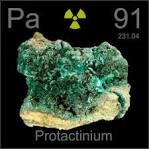
Protactinium |
Protactinium (chemistry) Protactinium is first identified by Kasimir Fajans and O. H. Göhring. |
|
30 Nov 1912

Henry Moseley |
Henry Moseley (chemistry) Henry Moseley shows that nuclear charge is the real basis for numbering the elements and discovers a systematic relation between wavelength and atomic number by using x-ray spectra obtained by diffraction in crystals.Frederick Soddy proposes that isotopes may have differing atomic weights. |
|
30 Nov 1912

J. J. Thomson |
J. J. Thomson (chemistry) J. J. Thomson shows that charged subatomic particles can be separated by their mass-to-charge ratio, the technique known as mass spectrometry. |
|
30 Nov 1912
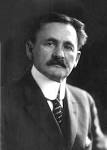
Albert A. Michelson |
Albert A. Michelson (geology) Albert A. Michelson measures tides in the solid body of the Earth |
|
30 Nov 1912

Pierre Duhem |
Pierre Duhem (history of science) Pierre Duhem begins publication of Le Système du Monde: Histoire des Doctrines cosmologiques de Platon à Copernic in Paris. |
|
30 Nov 1912

Alfred North Whitehead |
Alfred North Whitehead (mathematics) Publication of the 3rd volume of Principia Mathematica by Alfred North Whitehead and Bertrand Russell, one of the most important and seminal works in mathematical logic and philosophy. |
|
30 Nov 1912

Émile Borel |
Émile Borel (mathematics) Émile Borel first states the infinite monkey theorem in the way it will subsequently become known. |
|
30 Nov 1912
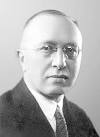
Nikolay Anichkov |
Nikolay Anichkov (medicine) Nikolay Anichkov first demonstrates the significance and role of cholesterol in atherosclerosis pathogenesis. |
|
30 Nov 1912

Albert Schweitzer |
Albert Schweitzer (medicine) Albert Schweitzer sets up the Albert Schweitzer Hospital at Lambaréné in French Equatorial Africa. |
|
30 Nov 1912

William Henry Bragg |
William Henry Bragg (physics) William Henry Bragg and William Lawrence Bragg work out the Bragg condition for strong X-ray reflection. |
|
30 Nov 1912

Niels Bohr |
Niels Bohr (physics) Niels Bohr presents his quantum model of the atom. |
|
30 Nov 1912

Robert Millikan |
Robert Millikan (physics) Robert Millikan measures the fundamental unit of electric charge. |
|
30 Nov 1912
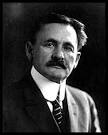
Georges Sagnac |
Georges Sagnac (physics) Georges Sagnac demonstrates the Sagnac effect, showing that light propagates at a speed independent of the speed of its source. |
|
30 Nov 1912

Johannes Stark |
Johannes Stark (physics) Johannes Stark demonstrates that strong electric fields will split the Balmer spectral line series of hydrogen. |
|
30 Nov 1912
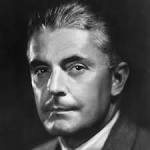
John B. Watson |
John B. Watson (psychology) John B. Watson publishes the article "Psychology as the Behaviorist Views It" — sometimes called "The Behaviorist Manifesto". |
|
30 Nov 1912

O.S. |
O.S. (technology) May 26 (May 13 O.S.) – Igor Sikorsky flies the world's first 4-engine fixed-wing aircraft, his Bolshoi Baltisky biplane, near Saint Petersburg. |
|
30 Nov 1912
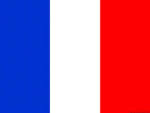
French |
French (technology) French inventor René Lorin patents the ramjet, but attempts to build a prototype fail due to inadequate materials. |
|
30 Nov 1912
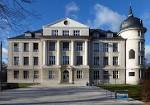
Die Kaiser-Wilhelm-Gesellschaft zur Förderung der Wissenschaften e. V. |
Die Kaiser-Wilhelm-Gesellschaft zur Förderung der Wissenschaften e. V. (publications) Die Naturwissenschaften first published by Die Kaiser-Wilhelm-Gesellschaft zur Förderung der Wissenschaften e. V. |
|
02 Jan 1913

Léon Teisserenc de Bort |
death Léon Teisserenc de Bort Léon Teisserenc de Bort (born 1855), meteorologist. |
|
31 Jan 1913

Murray Bowen |
birth Murray Bowen Murray Bowen (died 1990), American psychiatrist and pioneer of family therapy. |
|
01 Feb 1913

United States |
United States (chemistry) Daniel J. O'Conor and Herbert A. Faber file for a United States patent on the composite plastic laminate Formica. |
|
02 Feb 1913
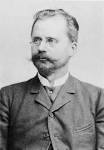
Carl Gustaf Patrik de Laval |
death Carl Gustaf Patrik de Laval Died 2 Feb 1913 at age 67 (born 9 May 1845). Swedish scientist, engineer and inventor who pioneered in the development of high-speed turbines. After earning his Ph.D. at age 27, he worked as a technical engineer at a steel mill in his home village. In 1877, he began developing a high-speed centrifugal cream separator, a significant advance in butter-making. He perfected a vacuum milking machine in 1913. About 1882, he began working on steam turbines, and by 1889, he applied for a British patent for an impulse type, with a jet of steam impinging on a set of blades around the periphery of a wheel. His inventive talent was wide, including electric lighting, electrometallurgy, and aerodynamics. During his lifetime, he acquired 92 Swedish patents and founded 37 companies. |
|
09 Feb 1913

Meteor procession of February 9, 1913 |
Meteor procession of February 9, 1913 (astronomy) Meteor procession of February 9, 1913 visible along a great circle arc 6,040 miles (9,720 km) across the Americas. Astronomer Clarence Chant concludes that the source was a small, short-lived natural satellite of the Earth. |
|
20 Feb 1913

Robert von Lieben |
death Robert von Lieben Robert von Lieben (born 1878), physicist. |
|
27 Feb 1913

Adam Sedgwick |
death Adam Sedgwick Died 27 Feb 1913 at age 58 (born 28 Sep 1854). English zoologist, a grandnephew of the geologist Adam Sedgwick, who is best known for his researches on the wormlike organism Peripatus, which he recognized as the zoologically important connecting link between the Annelida, or segmented worms, and the Arthropoda, such as crabs, spiders, and insects. |
|
26 Mar 1913
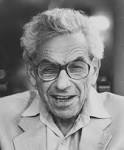
Paul Erdős |
birth Paul Erdős Paul Erdős (died 1996), Hungarian mathematician. |
|
13 Apr 1913

Robert Hingson |
birth Robert Hingson Born 13 Apr 1913; died 9 Oct 1996 at age 83. American anesthesiologist and inventor known for three major inventions that continue to relieve pain and suffering worldwide today. One is a very portable respirator anesthesia gas machine and resuscitator, called the Western Reserve Midget, used to deliver a short-term, general anesthetic A second came from extensive experiments in the use of anesthesia to prevent pain during childbirth, leading to the invention of the continuous caudal anesthesia techniques. Best known is his "peace gun," a pistol-shaped jet injector that enabled efficient, mass, needle-less inoculation worldwide against such diseases as small pox, measles, tuberculosis, tetanus, leprosy, polio and influenza. It can inoculate 1,000 persons per hour with several simultaneous vaccines. |
|
14 Apr 1913
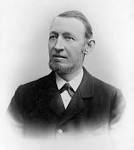
Carl Hagenbeck |
death Carl Hagenbeck Carl Hagenbeck (born 1844), zoologist. |
|
20 Apr 1913

Willi Hennig |
birth Willi Hennig Willi Hennig (died 1976), German entomologist and pioneer of cladistics. |
|
29 Apr 1913

Swedish American |
Swedish American (technology) Swedish American engineer Gideon Sundback of Hoboken, New Jersey, patents the all-purpose zipper. |
|
13 May 1913

Erich Lackner |
birth Erich Lackner Erich Lackner (died 1992), Austrian-born German civil engineer. |
|
28 May 1913

John Lubbock |
death John Lubbock John Lubbock (born 1834), naturalist and archaeologist. |
|
10 Jun 1913

Edward Abraham |
birth Edward Abraham Edward Abraham (died 1999), English biochemist. |
|
01 Aug 1913

stainless steel |
stainless steel (technology) Invention of stainless steel by Harry Brearley in Sheffield, England (concurrent with the invention of another type in the United States by Elwood Haynes). |
|
10 Aug 1913

Wolfgang Paul |
birth Wolfgang Paul Born 10 Aug 1913; died 6 Dec 1993 at age 80. German physicist who developed the Paul trap, an electromagnetic device that captures ions and holds them long enough for study and precise measurement of their properties. During the 1950s he developed the so-called Paul trap as a means of confining and studying electrons. The device consists of three electrodes - two end caps and an encircling ring. The ring is connected to an oscillating potential. The direction of the electric field alternates; for half the time the electron is pushed from the caps to the ring and for the other half it is pulled from the ring and pushed towards the caps. For his work he shared the 1989 Nobel Prize for Physics with Hans Georg Dehmelt and Norman F. Ramsey. |
|
20 Aug 1913

Roger Wolcott Sperry |
birth Roger Wolcott Sperry Roger Wolcott Sperry (died 1994), American neuropsychologist, neurobiologist and Nobel laureate. |
|
29 Sep 1913

Rudolf Diesel |
death Rudolf Diesel Rudolf Diesel (born 1858), mechanical engineer (lost overboard this night). |
|
10 Oct 1913

Remy Chauvin |
birth Remy Chauvin Remy Chauvin (died 2009), French biologist and entomologist. |
|
07 Nov 1913
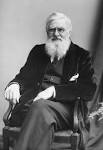
Alfred Russel Wallace |
death Alfred Russel Wallace Alfred Russel Wallace (born 1823), biologist. |